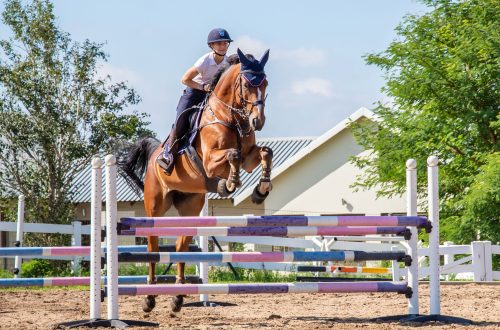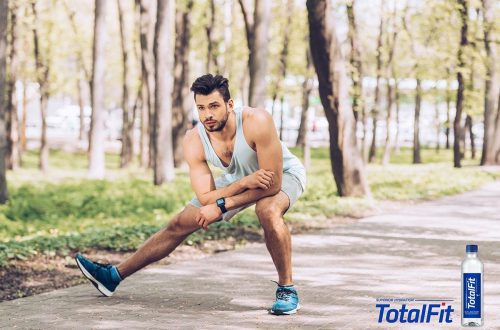
Leg horse and back horse
Horse working with legs and horse working with back
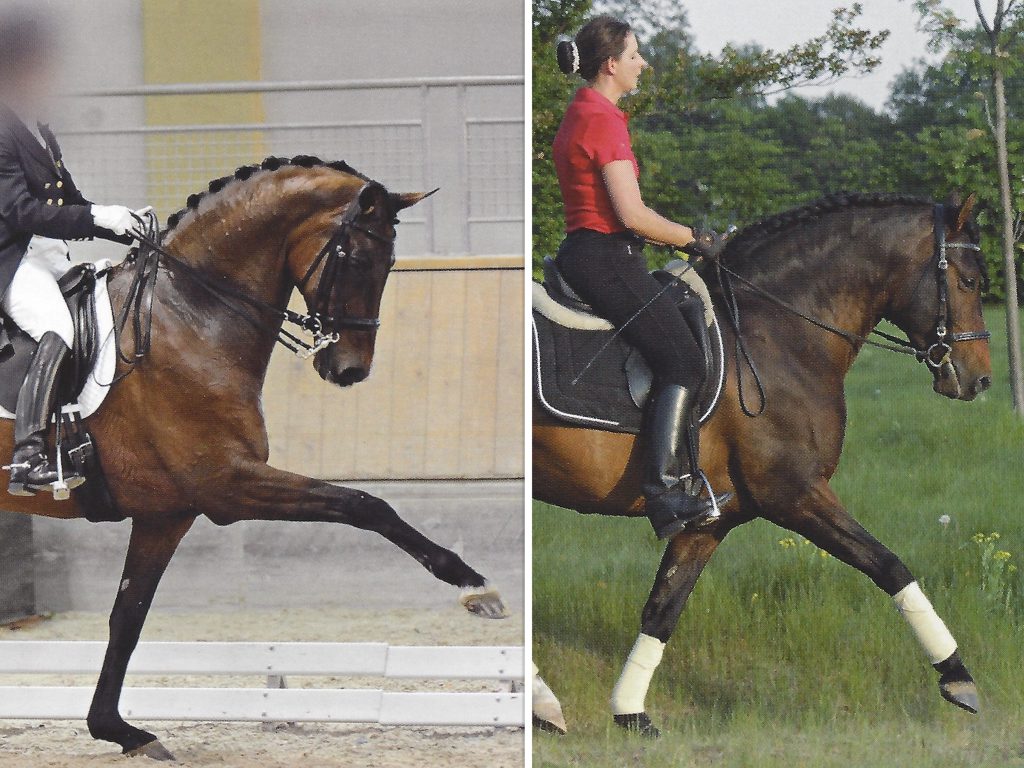
In the last decade, the terms “footwork” and “backwork” have appeared. But what do they mean? What is the difference between these “works”, does the difference matter?
Horse working with legs
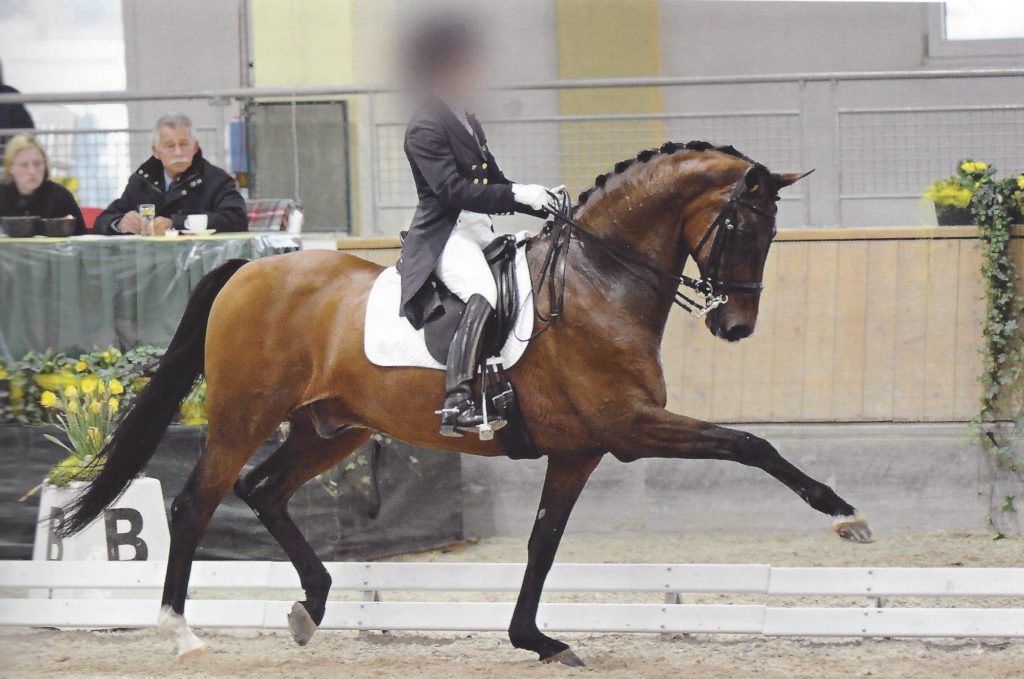
The horse in the photo works with its feet. See how different the angle of bending of the two diagonal legs, front and back. The back of the horse is set aside, the back sags. The neck is tight and twisted, and the nose is slightly behind the vertical …
The horse only works with his legs if the rider pulls, shortens and raises his neck to “absolute height”. A horse with a neck shortened in this way moves with a sagging back. The connection between the hind and front legs of the horse is lost, the gaits become poorer. The horse is tense, he resists and does not want to move forward.
How can you tell if a horse is using only its legs when moving? According to the following indications:
- Highly raised and clamped neck.
- Tense back.
- The horse is tailing.
- The horse makes hyper-movements with its front legs.
- The hind legs are set aside, the rear is not let down.
- The front and back legs do not work in parallel. At the same time, the forelegs are understood higher and take wider steps than the forelegs, which leads to failures in the gaits.
A horse that only works with its feet may look fine, but you can immediately tell that it is not working properly by noticing that its diagonal pairs of legs are not parallel when moving.
Horse working backwards
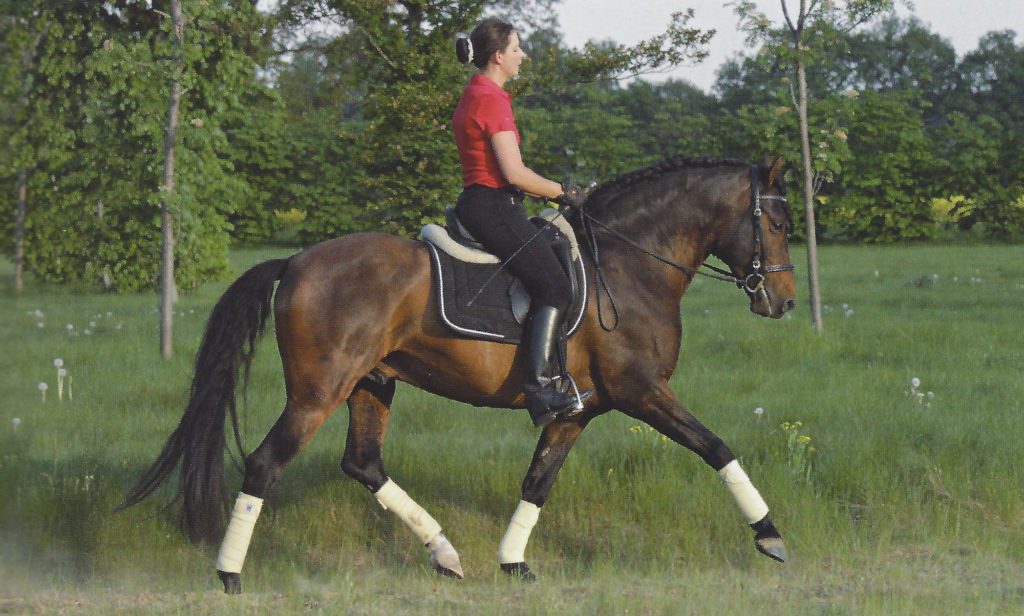
Please note: the angle at which the diagonal pairs of limbs are bent is the same. The back is connected, the head and neck are in a position corresponding to the level of the horse’s training.
A horse working with its back moves forward with pleasure, its front and back are included in the work. The horse uses his body correctly, according to his level of training. A horse that uses its back to move is trained in such a way that the position of its head and neck reflects its actual level of training, and is not forced to show what is not there.
The fact that the horse uses its back when moving is evidenced by the following:
- The back moves freely (you feel and see its vibrations).
- The head and neck are placed in a position that suits the preparation of the horse.
- The back is well muscled, does not sag.
- Diagonal pairs of legs move in parallel.
The movements of the horse using the back are not so bright, not hypertrophied, but the main thing is that such a horse works correctly from the point of view of biomechanics. She’s not tense, she’s not tight.
But why should it matter to us how the horse performs?
There are three fundamentally important arguments in favor of why it is better to buy or ride a horse that works with its back:
1. A horse working with its back will be able to maintain health longer, since its movements do not go against the principles of biomechanics. Such a horse is prepared to fulfill the requirements of the rider without harming his own body. Like a properly prepared, trained athlete, she will be able to have a long and successful sports career, even up to 20 years.
2. A horse that uses only its legs in motion has been trained by contraction. She was asked to narrow the frame when it was still beyond her physical capabilities. The training of such a horse took place in an atmosphere of stress and pain. When horses like this came to me in the medical center, I saw the same pockets of bondage and blockage over and over again. I will not tire of repeating that preventing this is better than treating it later. The back-working horse is ready to cooperate with the rider, ready to fulfill his requirements, since his training was gradual, he managed to avoid negative experiences. Such a horse does not seek to resist.
3. A horse that kicks will often follow the rider’s demands out of fear that the rider will hurt it. She takes little pleasure in her work. such a horse may become either too passive or, on the contrary, aggressive and even dangerous to ride. So her sports, and just riding career is coming to an end, and the body is being destroyed. A horse that has been trained gradually will work more confidently and it will be easier to accept new requirements and learn. In the absence of fear, her anxiety will also minimized. It is with such a horse that the rider will be able to build a fruitful working relationship.
Gerd Huismann (source); translation by Valeria Smirnova.
 Vagabond 29th of June 2017
Vagabond 29th of June 2017He is still Hoishman))) Answer
 Valeria Smirnova July 4 2017 city
Valeria Smirnova July 4 2017 cityThanks for the correction! I checked with my German colleagues, Heuschmann was right. Answer
 roller coaster July 2 2017 city
roller coaster July 2 2017 cityThe second photo is definitely not back work. In general, it is better to show a video than a photo. The second photo is just a lynx without much contact and collection, in a natural posture. Answer
 Maria July 2 2017 city
Maria July 2 2017 cityValkishka, choose your own photos, videos, indicate the background and write your own article. This is copyrighted material and copyrighted photographs. Answer




